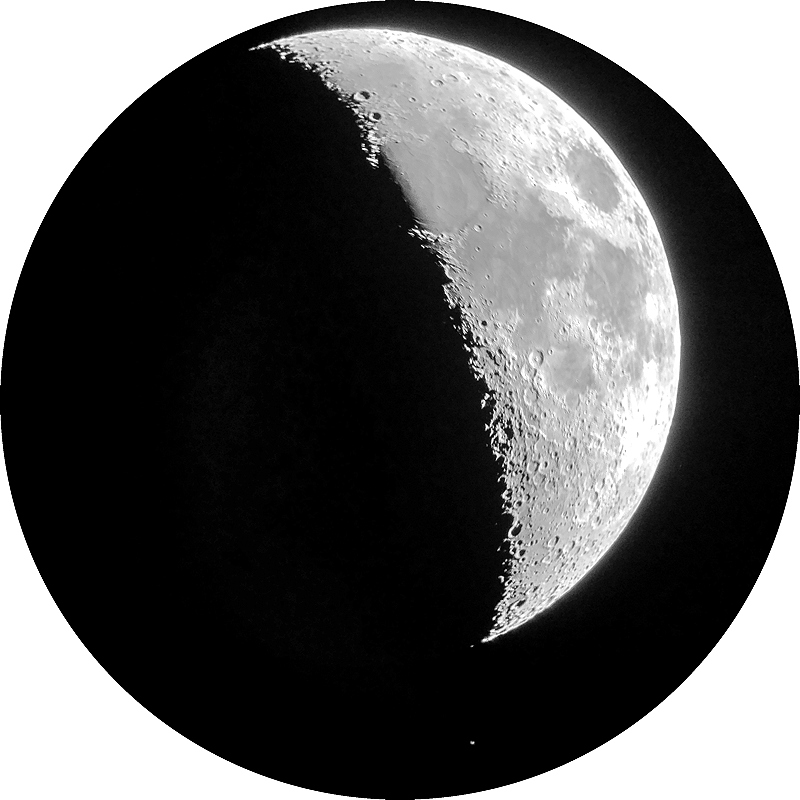iPhone Astrophotography:
Mercury, Saturn, & Kitt Peak; Lunar Craters
Posted: 25 November 2017
|
Open: Friday, 24 November 2017, 1804 MST Temperature: 70°F |
Session: 1170 Conditions: Mostly clear |
Equipment Used:
12" f/8 LX600 w/StarLock
2" 24mm UWA eyepiece
2" 30mm eyepiece
2" 9mm 100° eyepiece
Camera:
iPhone 8 Plus
After I arrived at the observatory I could see the planets Mercury and Saturn low in the southwestern sky. I found a good location where I could see the planets as well as Kitt Peak National Observatory (65 miles away). It was a pretty sight.
This is a slightly cropped handheld iPhone 8 Plus photo taken with the 2X telephoto lens using the Camera app. The Mayall 4-meter telescope dome is visible in the photo at the right edge of the flat mountain top of Kitt Peak.

Mouseover or tap on image for labels
1818 MST: LX600 ON, StarLock OFF, High Precision OFF.
Viewed the Moon, 102X and 81X. The star Theta Capricorni was visible just to the south of the Moon.
Mounted the iPhone on the 30mm eyepiece using the Levenhuk adapter for this photo of the Moon and Theta Capricorni taken with the iOS app NightCap Camera (ISO 22, 1/45sec):

Switched to a 2" 9mm 100° eyepiece to do some lunar observing, 271X. The craters Aristoteles and Eudoxus in the north and the craters Theophilus, Cyrillus, and Catharina in the south looked especially nice this night. I decided to image them, afocal 271X.
Craters Aristoteles and Eudoxus (ISO 22, 1/150sec)

Craters Theophilus, Cyrillus, and Catharina (ISO 22, 1/70sec)

I switched to use the iPhone 8 Plus 2X telephoto lens for a little more magnification for these photos.
Craters Aristoteles and Eudoxus (ISO 20, 1/60sec)

Craters Theophilus, Cyrillus, and Catharina (ISO 20, 1/60sec)

1840 MST: ended imaging.
Did some more lunar observing, 271X.
1851 MST: last look at the Moon, 102X.
1852 MST: LX600 OFF.
|
Close: Friday, 24 November 2017, 1901 MST Temperature: 67°F |
Session Length: 0h 57m Conditions: Clear |
Comments are welcome using Email. Twitter users can use the button below to tweet this report to their followers. Thanks.
Cassiopeia Observatory Home Page
Copyright ©2017 Michael L. Weasner / mweasner@me.com
URL = http://www.weasner.com/co/Reports/2017/11/25/index.html
